Cloudera vs Splunk
November 12, 2023 | Author: Michael Stromann
12
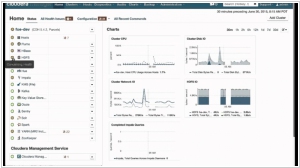
Cloudera helps you become information-driven by leveraging the best of the open source community with the enterprise capabilities you need to succeed with Apache Hadoop in your organization. Designed specifically for mission-critical environments, Cloudera Enterprise includes CDH, the world’s most popular open source Hadoop-based platform, as well as advanced system management and data management tools plus dedicated support and community advocacy from our world-class team of Hadoop developers and experts. Cloudera is your partner on the path to big data.
55
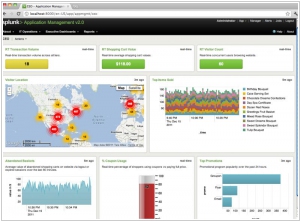
We make machine data accessible, usable and valuable to everyone—no matter where it comes from. You see servers and devices, apps and logs, traffic and clouds. We see data—everywhere. Splunk offers the leading platform for Operational Intelligence. It enables the curious to look closely at what others ignore—machine data—and find what others never see: insights that can help make your company more productive, profitable, competitive and secure.
Cloudera and Splunk are both prominent players in the field of data management and analytics, but they have different focuses and offerings.
Cloudera is an enterprise-grade big data platform that integrates various open-source technologies like Apache Hadoop, Apache Spark, and Apache Hive. It provides a comprehensive suite of tools and services for data ingestion, storage, processing, analytics, and machine learning. Cloudera is designed to handle large-scale data environments and offers features for data governance, security, and management. It enables organizations to build data-driven applications and perform advanced analytics on structured and unstructured data.
Splunk, on the other hand, is a specialized data analytics and monitoring platform that focuses on machine-generated data. It allows organizations to collect, index, and analyze log files, event data, and other machine data sources in real-time. Splunk provides powerful search and visualization capabilities, enabling users to gain insights, troubleshoot issues, and detect anomalies across diverse data sources. It offers features like dashboards, alerts, and machine learning-based anomaly detection to help organizations leverage their machine data for operational intelligence.
See also: Top 10 Public Cloud Platforms
Cloudera is an enterprise-grade big data platform that integrates various open-source technologies like Apache Hadoop, Apache Spark, and Apache Hive. It provides a comprehensive suite of tools and services for data ingestion, storage, processing, analytics, and machine learning. Cloudera is designed to handle large-scale data environments and offers features for data governance, security, and management. It enables organizations to build data-driven applications and perform advanced analytics on structured and unstructured data.
Splunk, on the other hand, is a specialized data analytics and monitoring platform that focuses on machine-generated data. It allows organizations to collect, index, and analyze log files, event data, and other machine data sources in real-time. Splunk provides powerful search and visualization capabilities, enabling users to gain insights, troubleshoot issues, and detect anomalies across diverse data sources. It offers features like dashboards, alerts, and machine learning-based anomaly detection to help organizations leverage their machine data for operational intelligence.
See also: Top 10 Public Cloud Platforms
Cloudera vs Splunk in our news:
2023. Cisco to acquire IT Monitoring giant Splunk for $28B
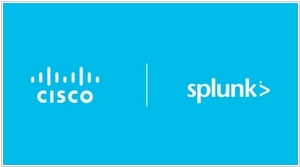
Cisco has announced that it is acquiring Splunk for $28 billion. This acquisition is strategically aligned with Cisco's security-focused business, as it gains access to Splunk's observability platform. This addition will enable Cisco to enhance its ability to assist customers in comprehending security threats while also providing valuable capabilities for analyzing extensive log data to address various challenges such as understanding system failures and troubleshooting a wide range of issues across enterprise systems. It's important to note that both company boards have already given their approval for the acquisition. However, it must undergo regulatory approval, which is not guaranteed due to the heightened scrutiny that such deals are encountering worldwide.
2022. Cloudera launches its all-in-one SaaS data lakehouse
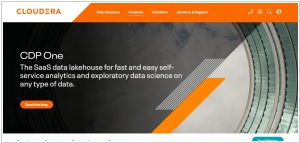
Cloudera, the company that specializes in big data with a focus on Hadoop, is now shifting its focus towards becoming the unified data fabric for hybrid data platforms. Taking a step further in this direction, the company recently launched its Cloudera Data Platform (CDP) One, a data lakehouse as a service (LaaS). This managed offering aims to provide enterprises with a platform that enables self-service analytics and data access for a broader range of employees. While Databricks, known for popularizing the lakehouse concept, also offers SaaS-based solutions, Cloudera positions its service as the "first all-in-one data lakehouse SaaS offering." Cloudera emphasizes that its service combines compute, storage, machine learning, streaming analytics, and enterprise security, making it a comprehensive solution for organizations.
2020. Splunk acquires network observability service Flowmill
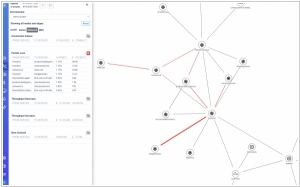
Data platform Splunk continues its acquisition streak as it expands its newly launched observability platform. Following the recent acquisitions of Plumbr and Rigor, the company has now announced the acquisition of Flowmill, a network observability startup based in Palo Alto. Flowmill specializes in helping users identify real-time network performance issues within their cloud infrastructure and offers traffic measurement by service to enable cost control. Similar to other players in this field, Flowmill leverages eBPF, a Linux kernel feature that allows the execution of sandboxed code without the need for kernel modification or loading kernel modules. This capability makes it particularly well-suited for application monitoring.
2020. Splunk acquires Plumbr and Rigor to build out its observability platform
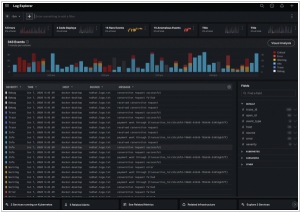
Data platform Splunk has recently made two acquisitions, namely Plumbr and Rigor, in order to enhance its newly launched Observability Suite. Plumbr specializes in application performance monitoring, while Rigor focuses on digital experience monitoring. Through synthetic monitoring and optimization tools, Rigor assists businesses in optimizing their end-user experiences. These acquisitions serve as valuable additions to the technology and expertise gained by Splunk through its acquisition of SignalFx for over $1 billion last year.
2018. Big Data platforms Cloudera and Hortonworks merge
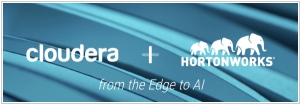
Over time, Hadoop, the once-prominent open-source platform, fostered the growth of numerous companies and an ecosystem of vendors. However, the complexity associated with Hadoop posed a significant challenge. This is where companies like Hortonworks and Cloudera stepped in, offering packaged solutions for IT departments seeking the advantages of a big data processing platform without the need to build Hadoop from scratch. These companies provided various approaches to tackle the complexity, but as cloud-based big data solutions gained prominence, the notion of implementing a Hadoop system from scratch became less compelling, even with the assistance of firms like Cloudera and Hortonworks. Today, both companies have announced their merger in a deal valued at $5.2 billion. The combined entity will serve a customer base of 2,500, generate $720 million in revenue, and possess $500 million in cash reserves, all while remaining debt-free.
2017. Splunk expands machine learning capabilities across platform
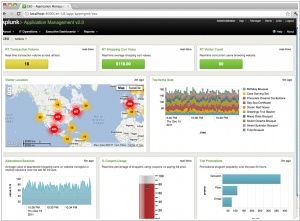
Cloud monitoring provider Splunk is bolstering its machine learning capabilities to facilitate the identification of critical data. The Splunk Machine Learning Toolkit introduces several new features specifically designed for those who prefer a do-it-yourself approach. Firstly, a new data cleaning tool has been implemented to prepare the data for modeling. Additionally, machine learning APIs have been introduced, enabling the importation of both open-source and proprietary algorithms for application within Splunk. Lastly, a machine learning management component allows for seamless integration of user permissions from Splunk into customized machine learning applications. For users seeking a more automated experience, Splunk offers new features such as Splunk ITSI 3.0. Leveraging machine learning, this tool assists in issue identification and prioritization based on the criticality of each operation to the business. These advancements empower users to derive meaningful insights from their data while tailoring the level of involvement according to their preferences.
2016. Splunk unveiled 300 machine learning algorithms for Operational Intelligence
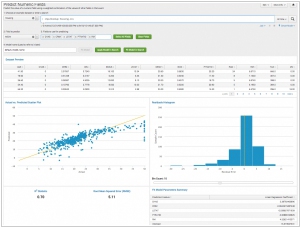
Splunk, a leading provider of Operational Intelligence platforms, has made significant advancements in incorporating machine learning capabilities into its platform, thereby expanding its range of services and capabilities. The company has integrated machine learning at the core of its platform through the introduction of a machine learning toolkit, which can be installed as a complimentary app on top of the Splunk Enterprise platform. This toolkit offers users access to a comprehensive set of 300 machine learning algorithms, with 27 of them conveniently pre-packaged and ready to use. These algorithms cover various categories such as clustering, recommendations, regression, classification, and text analytics. Furthermore, Splunk has enhanced its machine learning functionality within the IT Service Intelligence (ITSI) platform, which was initially introduced a year ago.
2015. Hortonworks acquired dataflow solutions developer Onyara
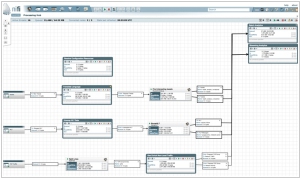
Hortonworks, a publicly traded company that offers a commercial distribution of the open-source big data software Hadoop, has announced its acquisition of Onyara, an early-stage startup known for the development of Apache NiFi. This open-source software originated within the National Security Agency (NSA) and enables efficient delivery of sensor data to appropriate systems while maintaining data tracking capabilities. In addition to previous acquisitions like XA Secure and SequenceIQ, Hortonworks has now expanded its portfolio with the intention of introducing a new subscription service based on Apache NiFi. This subscription will be marketed under the name Hortonworks DataFlow.
2015. Splunk acquired machine learning startup Caspida
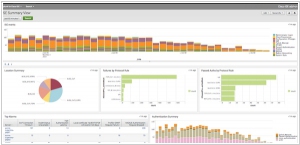
Cloud monitoring provider Splunk has recently acquired Caspida, a startup specializing in utilizing machine learning methods to detect cybersecurity threats both internally and externally. Splunk offers assistance to organizations in managing the influx of machine-generated data from their IT systems, employing data science techniques and automation to derive insights from it. Within its product portfolio, Splunk provides a security solution called Splunk App For Enterprise Security. By acquiring Caspida, Splunk enhances its security capabilities by incorporating the advanced machine learning techniques developed by Caspida. This empowers Splunk to analyze user behavior at a granular level, even for seemingly legitimate users with proper credentials. Splunk's overall approach revolves around data science-driven solutions, delivering automated threat detection and leveraging machine learning to continuously improve its capabilities over time.
2015. Google partners with Cloudera to bring Cloud Dataflow to Apache Spark
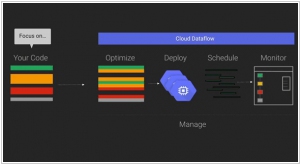
Google has announced a collaboration with Cloudera, the Hadoop specialists, to integrate its Cloud Dataflow programming model into Apache's Spark data processing engine. By bringing Cloud Dataflow to Spark, developers gain the ability to create and monitor data processing pipelines without the need to manage the underlying data processing cluster. This service originated from Google's internal tools for processing large datasets at a massive scale on the internet. However, not all data processing tasks are identical, and sometimes it becomes necessary to run tasks in different environments such as the cloud, on-premises, or on various processing engines. With Cloud Dataflow, data analysts can utilize the same system to create pipelines, regardless of the underlying architecture they choose to deploy them on.


